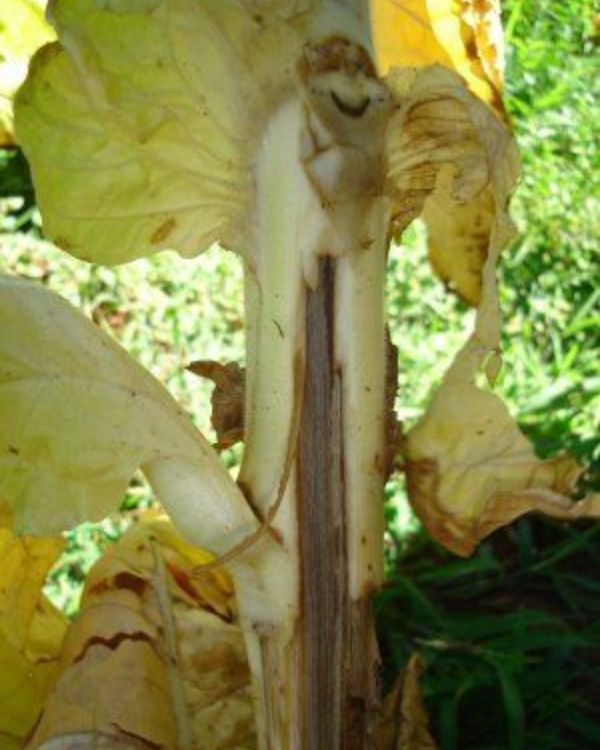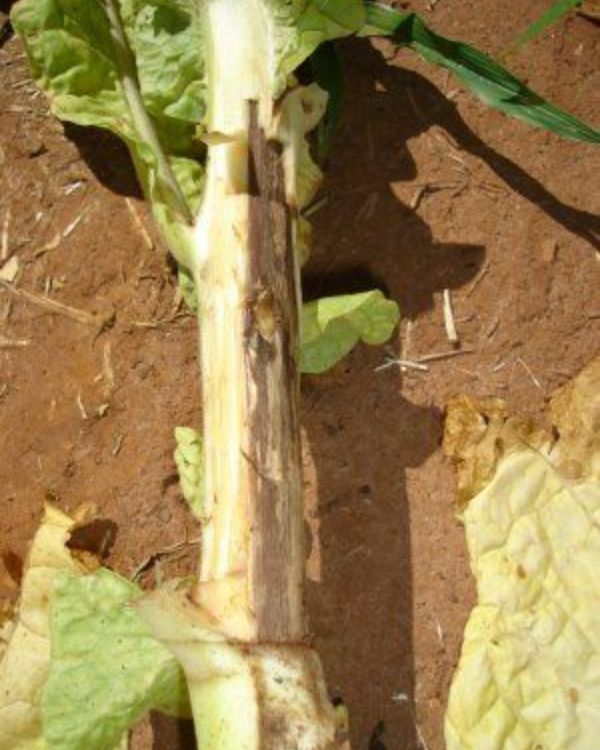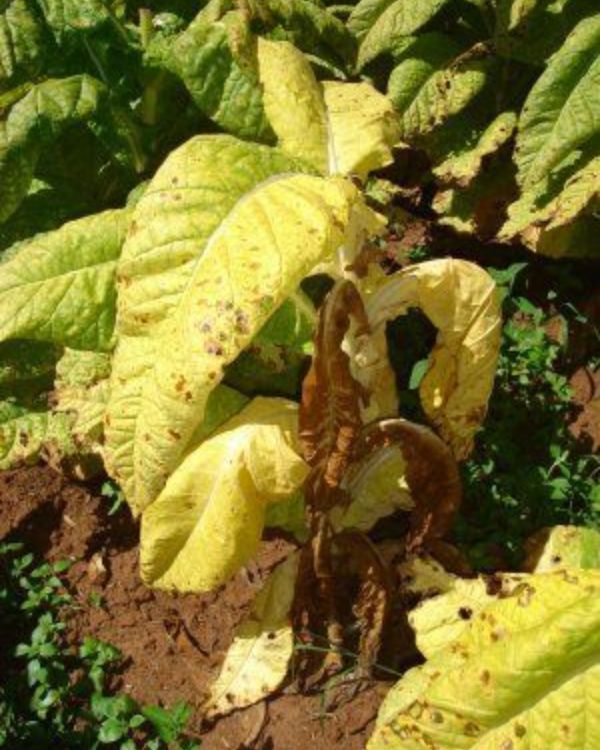Diseases and Pests
Fusarium Wilt
The symptoms normally start on one side of the plant, where the leaves begin to wilt and sometimes develop a “yellowish” or bronze coloration. Caused by a soil-borne fungus, this disease causes slow “yellowing” and drying of the leaves. On the affected side of the plant, there is an uniform chocolate brown discoloration of the entire vascular tissue. This symptom typical to Fusarium is in contrast with the black streaking (lines) of bacterial wilt. The unilateral appearance of the symptoms and vascular discoloration can cause confusion between Fusarium Wilt and bacterial wilt. Nonetheless, the “bacterial streaming” described for bacterial wilt is a reliable way to distinguish between these two diseases. Some roots on the affected side simply die. Fusarium Wilt, like bacterial wilt, is usually accompanied by root knot nematode infestations.
The fungus Fusarium oxysporum f. sp. nicotianae can survive in the soil for 10 years or more, and it is a parasite that enters roots through wounds caused by nematodes, or other root damages, and reaches the vascular system and spreads through the vessels, blocking them partially and reducing the plant’s water supplies.
Spreading of the fungus to other fields is through infected plants or plant material of tobacco, vegetables, potatoes or other weeds that are hosts of the disease. Therefore, it is important to sanitize tractors and implements after working in infected areas.
The best method to avoid Fusarium infestations is the use of tolerant cultivars. The use of nematicides and crop rotation could also be beneficial for areas seriously infected with nematodes and Fusarium.
ProfiGen released cultivars with good tolerance to Fusarium Wilt.
Symptom disease pictures:
See also
-
Diseases and Pests
- Cucumber Mosaic Virus - CMV
- Nematodes
- Potato Virus Y - PVY
- Yellow Stunt
- Diseases and Pests
- Bacterial Wilt
- Tobacco Mosaic Virus - TMV
- Curly top - BCTV
- Tomato Spotted Wilt Virus - TSWV
- Black Shank
Related products
-
PVH2233
PVY - Resistant
-
PVH2259
Nematode - Resistant
-
PVH2261
PVY - Resistant
-
PVH2275
Nematode - Resistant
-
PVH2291
Yellow Stunt - Tolerant
-
PVH2329
Yellow Stunt - Tolerant
-
PVH2340
Nematode - Resistant
-
PVH51
TMV - Resistant
-
HB4151P
Fusarium and Bacterial Wilt - Tolerant
-
HB4155P
Fusarium and Bacterial Wilt - Tolerant
-
HB4180P
Fusarium and Bacterial Wilt - Tolerant
-
KT210LC
Black Shank - Resistant
-
KT212LC
Black Shank - Resistant
-
NC4
Nematode - Resistant




